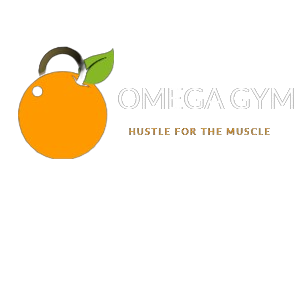I don’t want to get too technical about EPOC and fat loss, because then you are likely to zone out…
“I’ve been waiting for you, Obi-wan. We meet again at last. The circle is now complete. When I left you I was but the learner. Now I am the master!”
Okay… back to afterburn, EPOC and fat loss.
EPOC stands for Excess Post-exercise Oxygen Consumption.
After exercise the body consumes oxygen at an elevated rate, which also means it is expending more energy and calories at an elevated rate.

Basically the body is using more oxygen than normal to restore itself to its pre-exercise state.
Here is what is happening during EPOC:
- Replenishment of ATP-PC energy system. This energy source is responsible for short high power activities.
- The conversion of lactate to pyruvate. Lactate builds up when intense efforts last longer than the ATP-PC system can fuel them.
- Restoring the muscle glycogen used during the workout.
- Re-oxygenation of the blood and restoration of circulatory hormones.
- Get the body temperature back down to normal levels.
- Get breathing rate and heart rate back to normal levels.
If you reverse engineer the indicators of EPOC, you can create a workout that has a decent afterburn effect.
Running stairs is a prime example of an activity that covers all those points above.

It uses the ATP-PC system to accelerate up the stairs.
If the run to the top takes longer than 10-15 seconds, or the rest doesn’t allow for full ATP-PC recovery…the lactate system begins to power the running.
Muscle glycogen is burned as an energy source the entire time, since it requires a lot of muscle output to run up stairs.
The body temperature, breathing and heart rate all increase as a result of the exercise.
Why is Interval Training good for the afterburn effect?
Recovery periods of intervals (HIIT, MRT, etc.) allow the ATP-PC system and Lactate system time to recharge a bit. This allows them to contribute to the activity during each work portion of the interval.
Any activity that can be done without rest for a long period of time, becomes aerobic. There is still a slight afterburn effect, since you wind up with an increase in breathing, heart rate, and body temperature.
…but aerobic activity doesn’t tax the ATP-PC and Lactate systems.
This means your body doesn’t have to work as hard after the workout to get back to a resting state = Less Afterburn (EPOC).
Okay…time to talk about the elephant in the room.

In 2006 a paper was released examining all the major EPOC studies over the past 30 years:
LaForgia J et. al. Effects of exercise intensity and duration on the excess post-exercise oxygen consumption. J Sports Sci. 2006 Dec;24(12):1247-64.
The main findings about EPOC (afterburn effect)?
They found that the afterburn effect from exercise is MUCH less than we have been led to believe.
“…the earlier research optimism regarding an important role for the EPOC in weight loss is generally unfounded…The role of exercise in the maintenance of body mass is therefore predominantly mediated via the cumulative effect of the energy expenditure during the actual exercise.”
How many calories are burned after an exercise session?
This paper came to these conclusions:
- EPOC = 6-15% of the calories burned during the actual exercise.
- Steady state cardio averages close to 7% EPOC.
- Intense intervals can approach 14% EPOC.
What this means in calories burned?
If you hop on an Elliptical for an hour and burn 700 calories, by training at a moderate pace you will also burn an additional 49 calories after the workout is over (7% of 700).
What if you performed intense intervals on a treadmill for 30 minutes and burned 400 calories? You will also burn an additional 56 calories after the workout is over (14% of 400).
These numbers are just rough estimates.
…but the main point is that the calories burned after a workout session don’t amount to much.

Kind of confusing, isn’t it?
- The afterburn effect has been stressed as a great method to burn calories and get lean.
- …but now research is showing that the afterburn effect is much less than we have been led to believe.
Note: Christian Finn found an isolated study where afterburn effect was 37%. The irony is that this was from longer steady state cardio…not intervals. Read his post here (opens in new window).
We have so much more to learn when it comes to exercise, calorie burn, and fat loss.
Here’s another interesting fact…
Science does NOT have a practical way of measuring anaerobic metabolism (yet).
They are measuring Oxygen Consumption after a workout to estimate how many calories are burned after the workout.
Think about this…
Anaerobic exercise does not use oxygen, but we measure oxygen consumption to estimate calories burned?
Seems kind of backwards, doesn’t it?
…and if EPOC isn’t that great after intense exercise, there must be something else going on.
People are obviously getting lean from these workouts, but not as a result of EPOC.


